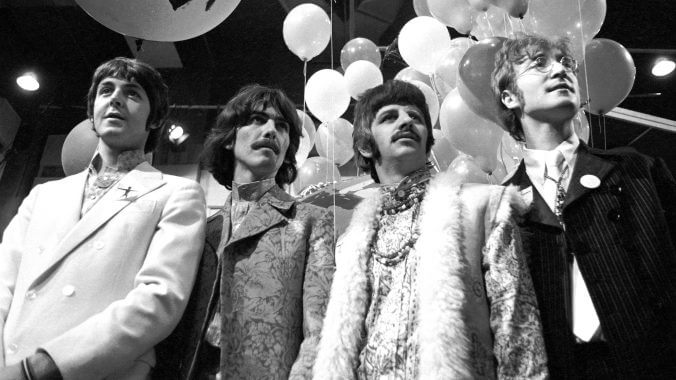The Beatles’ Final Song Is an AI-Assisted Success
“Now and Then,” an unfinished John Lennon demo, is restored with a little help from AI and completed by the remaining Beatles, making for a fitting curtain call to their story.
Photo by Ivan Keeman/Redferns/Getty
Arthur Sullivan, George Gershwin and Carole King composed the music. W. S. Gilbert, Ira Gershwin and Gerry Goffin wrote the lyrics. It’s a clearly defined division of labor common to many of the great musical partnerships. But the most successful collaboration of them all strayed from this familiar pattern. In John Lennon and Paul McCartney’s case, they were two partners who each had the complete package. So, they often wrote independently, with their collaboration flourishing in the small twists they would add to each other’s compositions, elevating them into something much greater.
“[McCartney] provided a lightness, an optimism, while I would always go for the sadness,” Lennon explained in one of his final interviews. In practice, this lightness might take the form of a jaunty middle-eight, added by McCartney to enliven one of Lennon’s more melancholy efforts. And Lennon might return the favor by throwing in an acerbic line or two to undercut McCartney’s maudlin tendencies. There was a yin and yang element to their partnership; they were both deeply interconnected and diametrically opposed at the same time. It was a dynamic that mirrored itself in their personal relationship, too. At times, they were the best of friends. But they could also fall into bitter disputes and periods of silence.
In this way, the partnership between John Lennon and Paul McCartney is not only the most successful songwriting collaboration in music history, it is also one of rock ‘n’ roll’s greatest and most tragic love stories. McCartney seems to agree. “I never really said, ‘You know, I love you man’,” he recently reflected. “I never really got round to it.” But this week, McCartney has added a fitting postscript to this musical love story, by transforming an unfinished Lennon demo into the final Beatles song, titled “Now and Then.” The original recording was captured by Lennon at his piano on a home cassette-recorder a year or so before his death. The surviving Beatles attempted to complete the song in the mid-1990s, during the same sessions that yielded “Free as a Bird” and “Real Love,” but the work on “Now and Then” was quickly abandoned due to the poor audio quality of Lennon’s demo. George Harrison reportedly described it as “fucking rubbish.”
Despite this, McCartney seems to have been unable to let it go. In the years since, he has often dropped hints in interviews of his intention to complete the track. Perhaps the idea of finishing this song means more to McCartney than the other Beatles because of his special relationship with Lennon. The song’s title even carries a personal resonance. According to Beatles mythology, Lennon’s final words to McCartney were: “Think of me every now and then, old friend.” Finally, after all these years, McCartney has been able to finish the song, thanks to recent advances in machine-learning demixing technology. It’s a form of artificial intelligence that can learn to recognize different sounds recorded on a single track and then separate them. In the case of Lennon’s “Now and Then” demo, the technology has been used to isolate his vocal from the piano and eliminate the background noise that caused such difficulties during the 1990s sessions. “There it was, John’s voice, crystal clear,” McCartney said of hearing Lennon’s restored vocal for the first time last year.
-

-

-

-

-

-

-

-

-

-

-

-

-

-

-

-

-

-

-

-

-

-

-

-

-

-

-

-

-

-

-

-

-

-

-

-

-

-

-

-








































